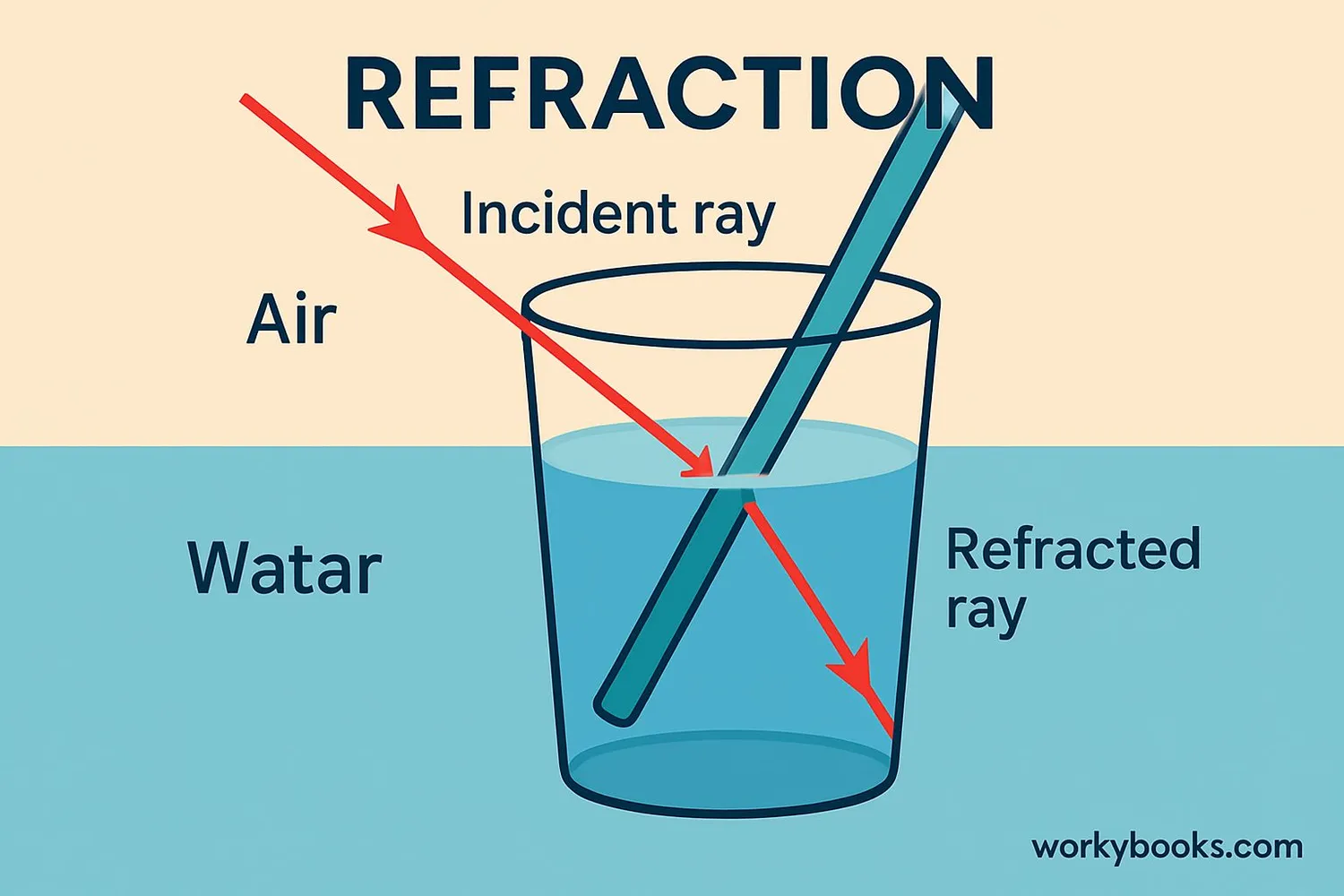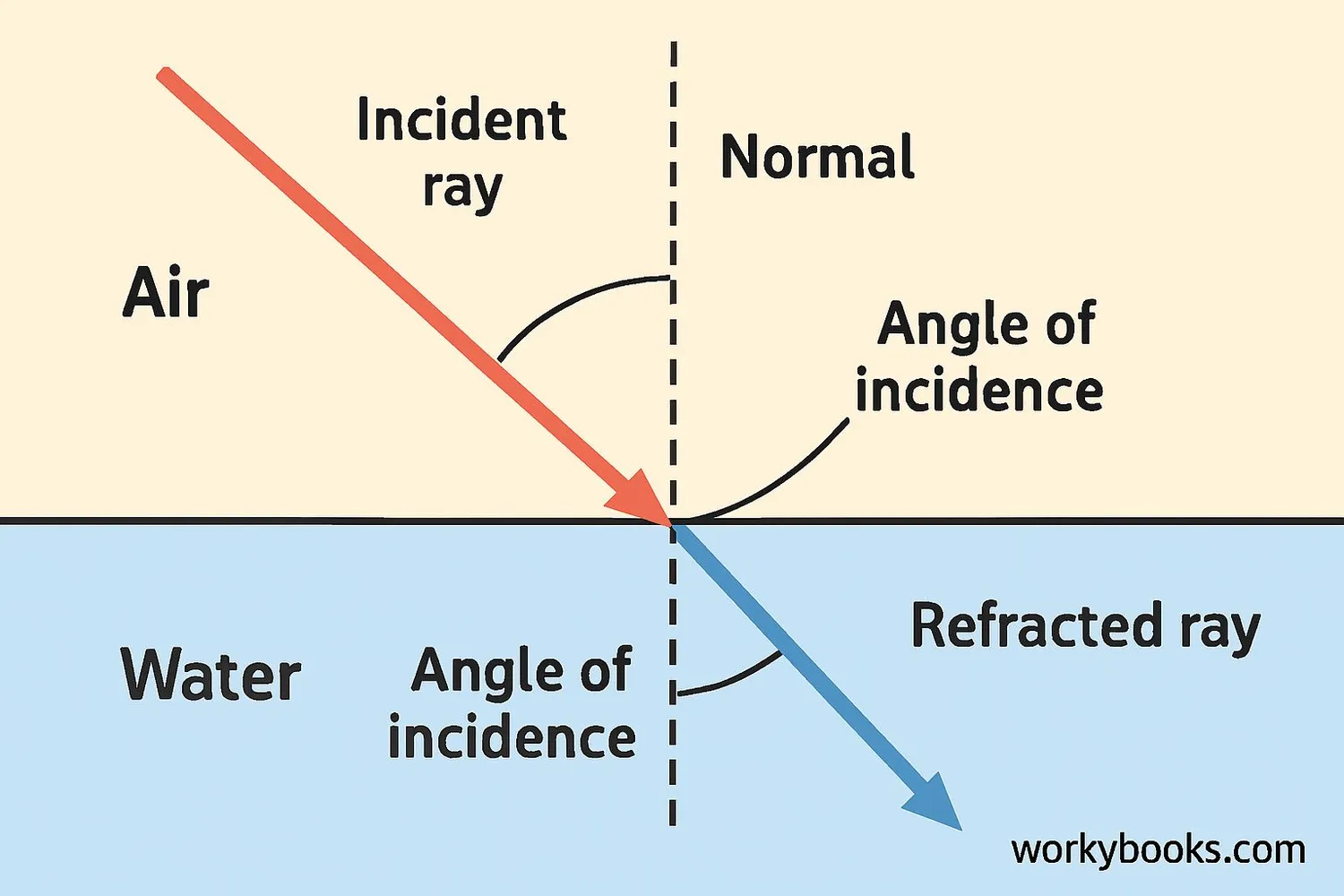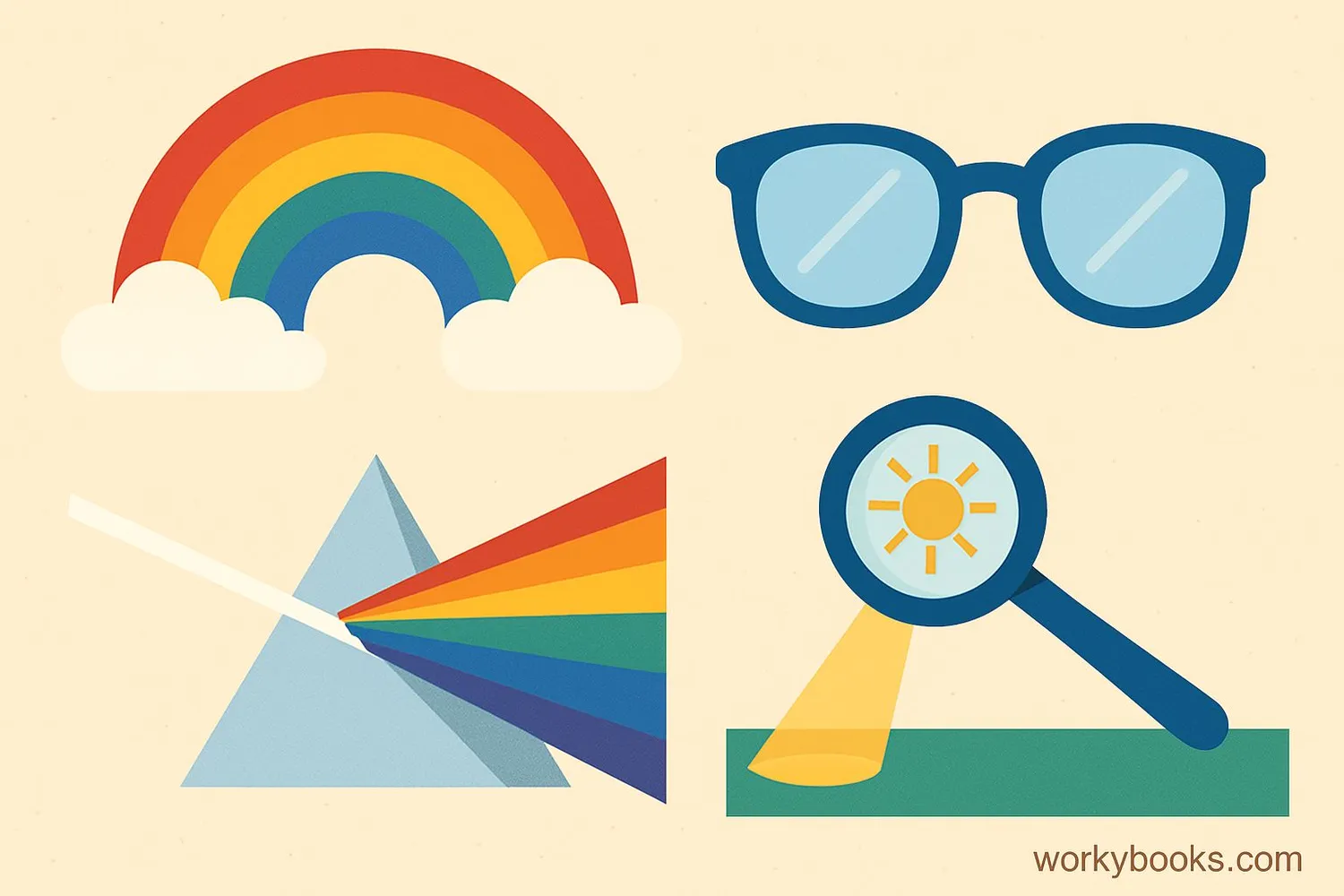Refraction - Definition, Examples, Quiz, FAQ, Trivia
Discover how light changes direction when it passes through different materials!
What is Refraction?

Refraction is the bending of light as it passes from one transparent material to another. This happens because light travels at different speeds in different materials.
When light moves from air into water, glass, or any other material, it changes speed and direction. This bending makes objects look like they're in a different position than they actually are! That's why a straw in a glass of water looks bent or broken at the water's surface.
Light Fact!
Light travels fastest in a vacuum (like space) at 299,792 kilometers per second! That's about 8 times around the Earth in just one second!
How Refraction Works

Refraction occurs because light changes speed when it moves between different materials. The amount of bending depends on two things:
1. The angle at which the light hits the surface
2. The materials the light is passing through
Scientists use Snell's Law to calculate how much light will bend. This law shows the relationship between the angles of the incoming and outgoing light rays.
Light Enters
Light ray approaches the boundary between two materials
Speed Change
Light changes speed in the new material
Direction Change
Light bends as it enters the new material
Refractive Index
Amount of bending depends on material's refractive index
Refractive index is a number that tells us how much a material slows down light. Air has a refractive index of about 1.0, water is 1.33, and glass is around 1.5. The higher the number, the more the light bends!
Snell's Law
Snell's Law is named after Dutch mathematician Willebrord Snellius, who discovered the law of refraction in 1621.
Real-World Examples of Refraction

Refraction isn't just science theory - we see it all around us! Here are some common examples:
Rainbows
Water droplets bend sunlight, separating it into colors
Eyeglasses
Lenses bend light to help people see clearly
Cameras
Lenses focus light onto the camera sensor
Mirages
Hot air bends light, creating illusions of water
Prisms are specially shaped pieces of glass that use refraction to separate white light into the colors of the rainbow. This happens because different colors of light bend by different amounts - violet bends the most, red the least.
Lenses in eyeglasses, cameras, telescopes, and microscopes all work by carefully bending light to help us see things more clearly or make distant objects appear closer.
Refraction Knowledge Check
Test your understanding of refraction with this quiz! Answer all 5 questions to see how much you've learned.
Frequently Asked Questions
Here are answers to some common questions about refraction:
Cool Refraction Facts
Discover some amazing facts about refraction!
Animal Vision
Archerfish use refraction to hunt! They spit water at insects above the surface, accounting for how light bends at the air-water boundary.
Ancient Discoveries
The ancient Egyptians used refraction without understanding it! They made glass beads as early as 2500 BCE that bent light to create magnified images.
Starlight Bending
Einstein predicted that stars' light bends around the sun due to gravity. This was proven during a 1919 solar eclipse, making Einstein famous worldwide!
Speed Matters
Light travels through diamond at less than half its speed in vacuum (124,000 km/s vs 299,792 km/s). This is why diamonds sparkle so brilliantly!





